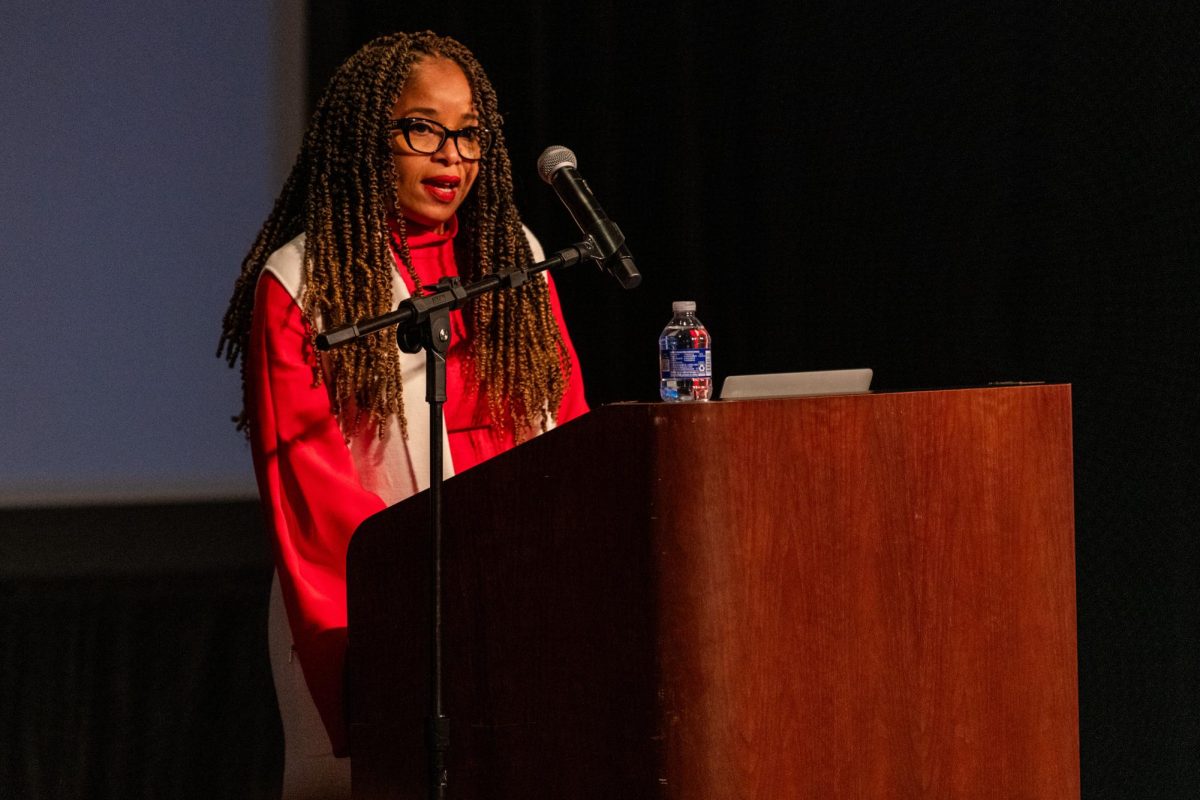Over the course of a decade, Nicole Fleetwood interviewed over 6,000 incarcerated artists about their experiences creating art in prison, an environment where space, materials and time are limited.
Fleetwood, a MacArthur Genius Fellow and author of the award-winning book “Marking Time: Art in the Age of Mass Incarceration,” gave the 10th annual Black History Month lecture at the Heinz History Center in downtown Pittsburgh last Wednesday. The History Center’s African American Program presents the Black History Month Lectures as a way of highlighting the work of prominent African American scholars, artists and creators. Sponsored in part by Carnegie Mellon, Fleetwood’s lecture, “Art in the Age of Mass Incarceration,” took attendees through the experience behind creating her novel.
Despite her scholarly status, Fleetwood doesn’t consider herself an expert on the subject of art in prison but rather a student of it, deferring the expertise to those who have endured the experience.
Growing up in a historically Black steel mill community in southwest Ohio, Fleetwood watched friends and family end up in the carceral system as the steel mill industry declined and generations of her community members had their livelihoods devastated.
One of Fleetwood’s first teachers and the starting point of her research on prison art was her cousin, Allen, who was incarcerated at the age of 18. When Fleetwood visited her cousin in 2010, she found the art inmates created and displayed around the prison striking, which led her to start her decade-long research.
A large share of art created in the carceral system never leaves the walls of a prison, often falling victim to confiscation, destruction or the passing of time. To counteract this loss and validate the legitimacy of art created in the carceral system, Fleetwood shares the work of incarcerated artists with the public. In doing so, she aims to shed light on an experience people can’t fully grasp from the outside — being incarcerated.
James Yaya Hough, a formerly incarcerated artist who attended Fleetwood’s lecture, said he believes the reason Fleetwood’s work is successful is because she lets incarcerated people tell their own stories through showcasing their work.
“She does not operate as an art historian or a judge of the work or the people who make it,” Hough said. “What she does is she curates the work to educate and inform and sow empathy.”
Samuel Black, the director of the African American Program at the Heinz History Center, said the approach Fleetwood has taken to prison art has given visibility to the work of incarcerated artists and the experience of incarceration itself.
“[Fleetwood’s novel] is opening a world that we don’t see unless you’ve been there and experienced what it’s like to be incarcerated,” Black said. “We have an opportunity, those of us who are not incarcerated, to engage with artists in public, through exhibition, through art shows, maybe even visiting a gallery — you can’t do that with incarcerated people. There’s limits to the exposure their creativity is allowed to have.”
As part of her lecture, Fleetwood showed audiences the work of incarcerated artists Mary Enoch Elizabeth Baxter, Gilberto Rivera and George Anthony Morton.
On top of discussing the story behind her project, Fleetwood engaged the audience in larger discussions about the expansiveness of the carceral system. With half of all Americans knowing someone who is or has been incarcerated, Fleetwood emphasized how integral punishment is to our society.
“We are now living in a society where the carceral state is so rapacious that we all in some ways can be caught up in it,” Fleetwood said. “Criminalization is something that is very flexible — it’s not about wrongdoing. It’s about systems of power that are used to ham the most vulnerable populations.”
Lu Randall, a Monroeville resident who attended the lecture, said she felt Fleetwood’s lecture had the capacity to connect with the familiarity many people have with the carceral system, either personally or through their loved ones.
“I think it [the lecture] validates some people’s realities,” Randall said. “I’m sure there are people here that are returning citizens, or people that were formerly incarcerated, or family members, and they know that art is the lifeblood of some people that are incarcerated.”
To Janina Lopez, a doctoral student of the history of art and architecture at Pitt, Fleetwood’s focus on art as a way of encouraging people to consider the realities of the prison system is a powerful choice.
“I think art has the capacity to start up conversations and spark points of connection between people who don’t necessarily have a lot in common,” Lopez said. “Art can be one of those roads into creating community between the outside and the inside when it comes to mass incarceration.”
To end her lecture, Fleetwood said she hopes audiences can be mindful of the agency they have in changing the system of punishment. Even small actions, like engaging with the work of incarcerated artists, can make an impact.
“Everyday we are making micro choices about what kind of society we want to live in,” Fleetwood said. “It’s how we treat the people who are most intimate to us, but also the strangers on the street.”



